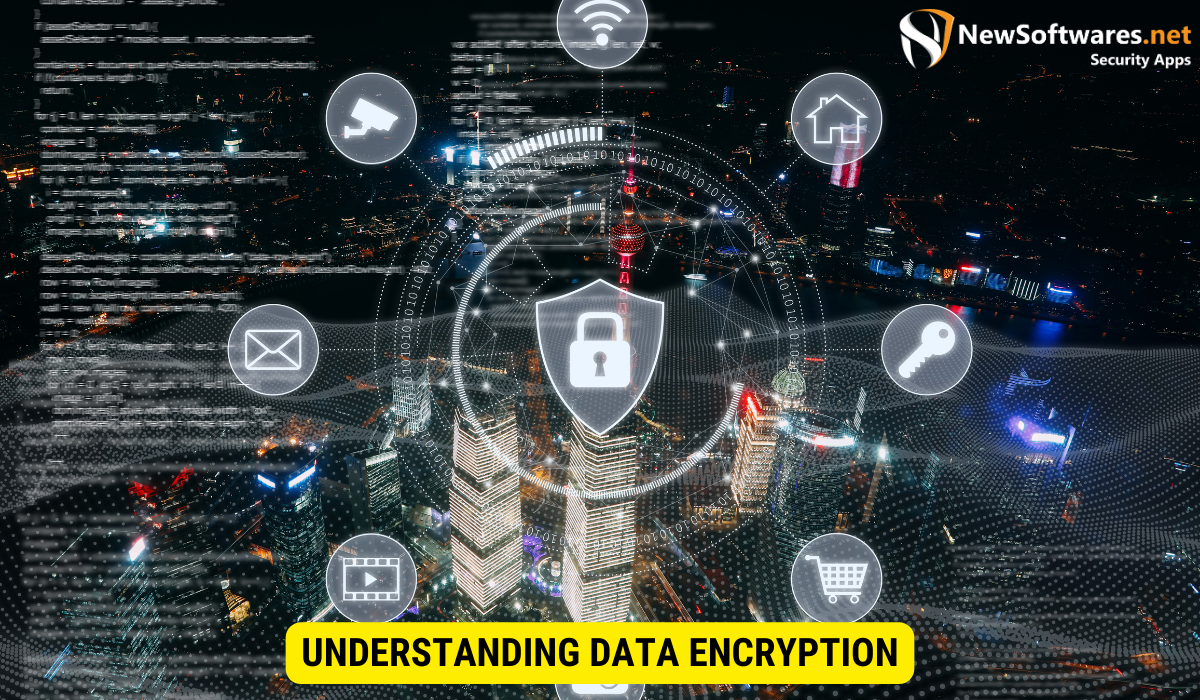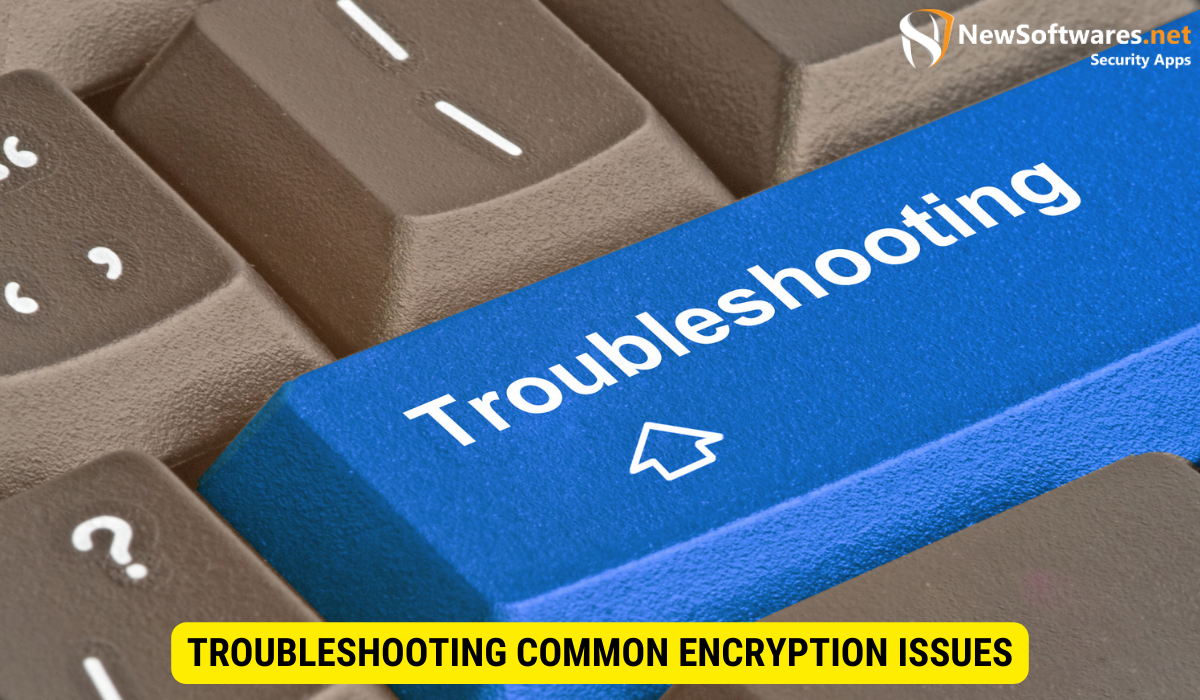Encrypting data from the Windows Command Prompt (CMD) is a vital step in safeguarding sensitive information. This process transforms plaintext into unreadable ciphertext, ensuring data security. Understanding data encryption basics, using Command Prompt commands, and verifying encryption success are key. Common encryption issues, such as error messages and failed encryption, can be resolved by troubleshooting file permissions, disk space, and administrative privileges.
Data encryption is a crucial process that helps protect sensitive and confidential information from illegal access. Encrypting data ensures that it is changed into a coded form that can only be accessed by individuals with the correct encryption key. Together, we will explore the steps to encrypt data from the Windows Command Prompt (CMD). We will also delve into the fundamentals of data encryption, the basics of Command Prompt, and how to troubleshoot common encryption issues.
Understanding Data Encryption

Data encryption involves transforming plaintext data into unreadable data or text, making it unreadable to anyone without the proper encryption key. By encrypting data, organizations can safeguard sensitive information such as personal details, financial records, or trade secrets from unauthorized individuals. Encryption is particularly important when data is stored or transmitted, as it acts as an additional layer of security.
What is Data Encryption?
Data encryption is the process of encoding data using an algorithm and a secret key or password. This transformation ensures that the original data is unreadable and protected from unauthorized access. Encryption algorithms utilize complex mathematical functions to convert the plaintext information into ciphertext. Only individuals with the proper encryption key can decrypt the encrypted data and access the original information.
Importance of Data Encryption
Data encryption plays a critical role in maintaining the confidentiality and integrity of sensitive information. Here are some key reasons why data encryption is essential:
- Data Security: Encryption helps protect data from unauthorized access, ensuring that only authorized individuals can decrypt and access the information.
- Compliance with Regulations: Many industries are required to adhere to specific data protection regulations. Encrypting data helps organizations meet these compliance requirements.
- Protection from Data Breaches: Encrypted data is significantly more challenging for attackers to decrypt without the encryption key. This serves as an additional layer of shield against data breaches.
- Secure Data Transmission: Encryption is crucial when transmitting sensitive information over networks or the internet. It prevents interception by unauthorized third parties.
- Enhanced Trust: Organizations that prioritize data encryption demonstrate a commitment to protecting their customers’ information, building trust with their stakeholders.
Data encryption is not a new concept. It has been used for centuries to protect sensitive information. In ancient times, encryption was primarily used in military and diplomatic communications. Ancient civilizations, for example the Egyptians and Romans, developed various encryption techniques to ensure the secrecy of their messages.
One of the earliest known encryption methods is the Caesar cipher, named after Julius Caesar. This technique involved shifting each letter in the plaintext by a certain number of positions in the alphabet. For example, a shift of three positions would transform the letter ‘A’ into ‘D’, ‘B’ into ‘E’, and so on. The recipient of the encrypted message would then perform the reverse shift to decrypt the ciphertext and reveal the original message.
As technology advanced, encryption techniques became more sophisticated. In the modern era, encryption algorithms are based on complex mathematical functions and utilize large encryption keys. These algorithms ensure that the encryption process is secure and resistant to attacks.
With the rise of the digital age, data encryption has become even more crucial. The proliferation of computers, smartphones, and the internet has made it simple for individuals and organizations to store and transmit huge amounts of data. Moreover, this convenience also comes with increased risks. Cybercriminals and hackers are constantly seeking ways to make use of vulnerabilities and gain unauthorized access to sensitive information.
Data breaches have become a common occurrence, with high-profile incidents affecting organizations across various industries. These breaches can outcome in significant financial losses, damage to reputation, and legal consequences. To mitigate these risks, organizations must implement robust data encryption practices.
Encryption algorithms used today are designed to be highly secure and resistant to attacks. They employ complex mathematical functions that are computationally intensive, making it extremely difficult for attackers to decrypt the encrypted data without the encryption key. Additionally, encryption keys are typically long and randomly generated, further enhancing the security of the encryption process.
While data encryption provides a strong layer of protection, it is important to note that it is not a standalone solution. It should be used in conjunction with other security measures, for example access controls, firewalls, and intrusion detection systems, to create a complete security strategy.
In finale, data encryption is a critical component of modern information security. It ensure that sensitive data remains confidential and protected from unauthorized access. By implementing robust encryption practices, organizations can enhance data security, comply with regulations, protect against data breaches, facilitate secure data transmission, and build trust with their stakeholders.
Basics of Command Prompt
Command Prompt, also known as CMD, is a powerful command-line interpreter in Windows operating systems. It provides a text-based interface that allows users to interact with the operating system through commands. Before we dive into the steps to encrypt data from CMD, let’s familiarize ourselves with a few key aspects of Command Prompt.
Introduction to Command Prompt
Command Prompt allows users to carry out various commands and scripts directly from the Windows command-line interface. It provides quick access to system utilities, settings, and configurations. To open Command Prompt, press the Windows key & R at the same time to bring up the Run dialog box. Then, type ‘cmd’ and hit Enter.
Commonly Used Command Prompt Commands
Command Prompt offers a wide range of commands to interact with the operating system and perform various tasks. Here are a few commonly used commands:
- cd: Change directory
- dir: List files and directories
- copy: Copy files and directories
- del: Delete files
- ren: Rename files
These commands are just the slant of the iceberg when it comes to the broad range of functionalities offered by Command Prompt. Familiarizing oneself with these commands can significantly enhance the efficiency and productivity of using Command Prompt.
Preparing Your Data for Encryption
Before encrypting data from CMD, it is essential to prepare the data properly. This involves considering the type of data and backing it up to prevent any potential data loss during the encryption process.
Choosing the Right Data
When encrypting data, it is important to carefully select the files and folders that contain sensitive or confidential information. By focusing on specific data, you can optimize the encryption process and avoid encrypting unnecessary files. This will also reduce the time required for encryption and decryption.
Backing Up Your Data
Prior to encrypting data, it is recommended to create a backup to ensure the availability of the original files. While encrypting files adds an extra layer of security, any issues during the encryption process could lead to data loss. By creating a copy of the data, you can easily recover the files in case of any unforeseen complications.
Step-by-Step Guide to Encrypt Data from CMD
Now that we have enclosed the fundamentals, let’s dive into the step-by-step process of encrypting data from CMD. Follow the instructions below to secure your sensitive information:
Accessing Command Prompt
- Press the window key and R at the same time to bring up the Run dialog box.
- Type ‘cmd’ and hit Enter. This will open Command Prompt.
Using Cipher Command for Encryption
- In Command Prompt, navigate to the directory where the files or folders you want to encrypt are located using the ‘cd’ command.
- Once in the desired directory, enter the following command: ‘cipher /e [filename or folder name]’.
- Press Enter to initiate the encryption process.
Verifying the Encryption
- To verify whether the encryption was successful, use the ‘cipher /s:[directory path]’ command.
- This command lists all the encrypted files within the specified directory. If your file appears on the list, it has been successfully encrypted.
Troubleshooting Common Encryption Issues

While encrypting data from CMD is relatively straightforward, it is essential to be aware of common issues that may arise during the process. Here are a couple of common encryption issues and how to troubleshoot them:
Dealing with Error Messages
During the encryption process, you may encounter error messages that can hinder the successful encryption of your data. It is crucial to carefully read and understand the error message to identify the root cause. Common solutions include ensuring that you have the necessary permissions to encrypt the file or resolving any disk space issues.
What to Do When Encryption Fails
If the encryption process fails, there are a few steps you can obtain to troubleshoot the issue:
- Try Encryption on a Different File: If you are encountering issues with a specific file, try encrypting a different file to determine if the problem persists.
- Check Available Disk Space: Ensure that you have sufficient disk space available to complete the encryption process.
- Verify File Permissions: Make sure that you have the essential permissions to encrypt the file. Attempt the encryption process with administrative privileges if required.
Key Takeaways
- Data encryption is the process of converting plaintext information into ciphertext to protect it from unauthorized access.
- Encrypting data enhances data security, aids regulatory compliance, and protects against data breaches.
- Command Prompt (CMD) is a powerful command-line interpreter that allow users to react with the Windows operating system through commands.
- To encrypt data from CMD, access Command Prompt, steer to the desired directory, and use the ‘cipher /e’ command.
- Common encryption issues include error messages and failed encryption. Troubleshoot these issues by understanding the error message and verifying file permissions and disk space.
FAQs
Can I encrypt multiple files simultaneously using CMD?
Yes, you can encrypt multiple files simultaneously using CMD. Simply navigate to the directory containing the files you wish to encrypt and use the ‘cipher /e’ command followed by the file names.
Can encrypted files be decrypted without the encryption key?
No, encrypted files cannot be decrypted without the encryption key. The encryption key is essential for decrypting the data and returning it to its original readable form.
Is data encrypted during transmission over the internet?
In most cases, data is encrypted during transmission over the internet. Secure protocols such as HTTPS encrypt the data to ensure that it remains confidential during transmission.
Can I encrypt system files from CMD?
Encrypting system files from CMD is not recommended, as it can potentially cause system instability or prevent the operating system from functioning properly. It is advisable to consult with a professional or follow specific guidelines provided by the operating system manufacturer.
Is data stored on encrypted devices secure?
Data stored on encrypted devices is significantly more secure than data stored on unencrypted devices. Encryption adds an additional layer of protection, making it significantly harder for unauthorized individuals to access the data.
Conclusion
In conclusion, encrypting data from CMD is a crucial step in safeguarding sensitive information from unauthorized access. By understanding the basics of data encryption, familiarizing yourself with Command Prompt, and following the step-by-step guide provided in this article, you can steadily encrypt your data. Remember to choose the right data for encryption and make backups to minimize the risk of data loss. Should any issues arise during the encryption process, the troubleshooting tips provided can help resolve them. Protect your valuable information by leveraging the power of encryption from CMD.
